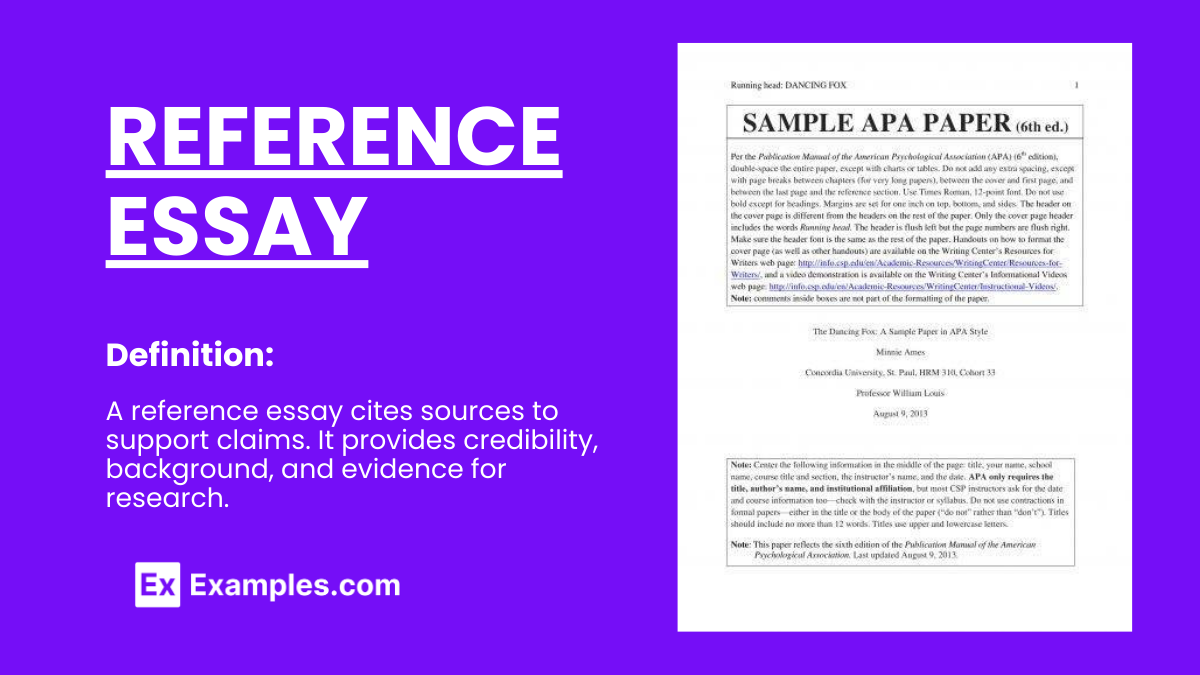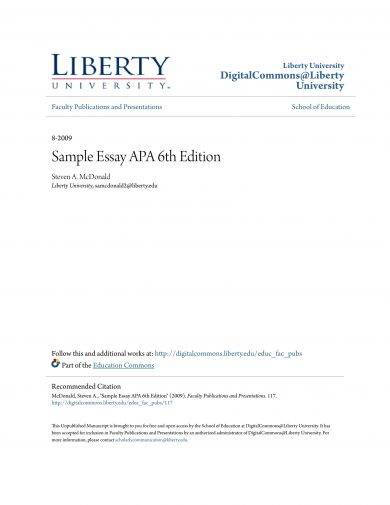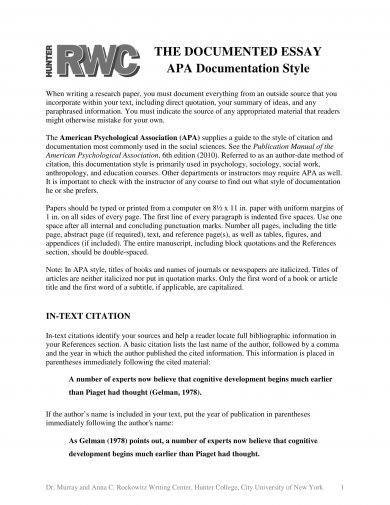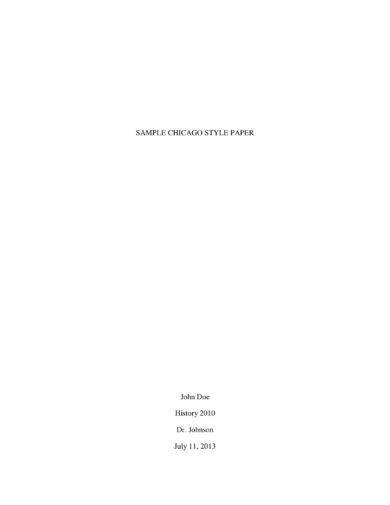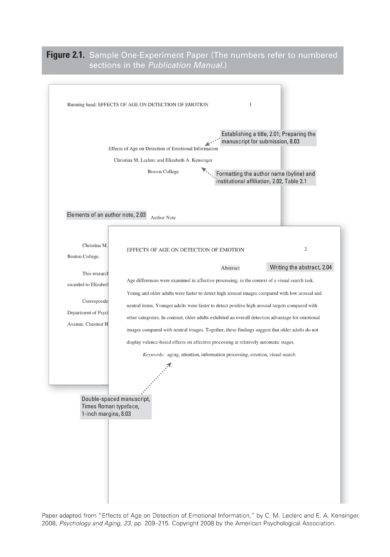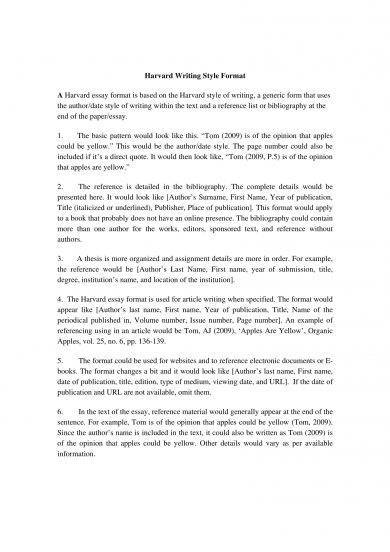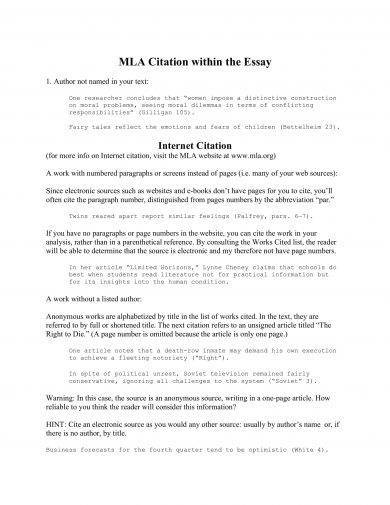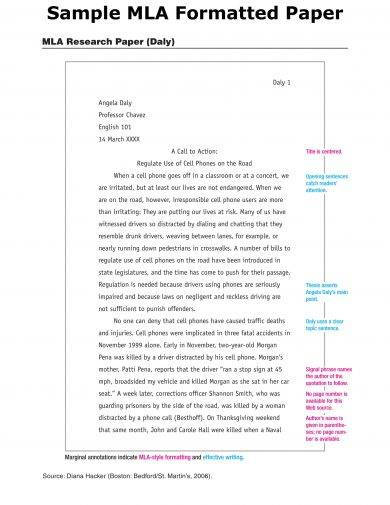9+ Reference Essay Examples to Download
In our research, technical, or science papers, it is common that we have a lot of sources from different books and publications. We need them in order to gather some facts, ideas, images, and many other important information. You may also see essay writing examples.
Using words or ideas from other authors without acknowledging them and citing them is a form of plagiarism, the act of stealing someone’s ideas and using it as its own. This is something that every writer must avoid not only to have a good credibility but also to come up with fresh and novel ideas and notions. You may also like short essay examples & samples.
Citing the authors or the publications in your essay is one thing that you must not forget to do. There are a lot of citation styles that you can use depending on the subject area that you are working on and on the paper that you are writing, and this will be fully discussed in the succeeding sections. You may also check out what are the parts of an essay?
For now, below are some examples of reference essays that you might find useful for your write-up. Additionally, there are other examples of essays that might interest you.
What is Reference Essay?
A Reference Essay is an academic writing piece that extensively cites sources and research to support arguments, analysis, or interpretations on a specific topic. It aims to engage with existing literature, theories, or findings within a field, offering a comprehensive overview of the subject matter based on scholarly evidence.
Reference Essay Format
Title Page
- Title of the Essay: Clear and concise, reflecting the essay’s content.
- Author’s Name
- Institutional Affiliation
- Course
- Instructor’s Name
- Date
Introduction
- Hook: An engaging opening sentence or question to capture the reader’s interest.
- Background Information: Brief context or background to the topic being discussed.
- Thesis Statement: A clear, concise statement of the essay’s main argument or purpose.
- Overview of the Essay Structure: Briefly outline what the reader can expect in the essay.
Body Paragraphs
Each body paragraph should focus on a single main idea that supports the thesis, structured as follows:
- Topic Sentence: Introduces the main idea of the paragraph.
- Explanation/Analysis: Detailed explanation or analysis of the topic, supported by evidence from scholarly sources.
- Evidence: Direct quotes, paraphrases, or summaries of relevant research, properly cited.
- Link to the Thesis: Explain how this evidence supports your thesis.
- Transition: Smooth transition to the next paragraph or idea.
Conclusion
- Summary of Main Points: Concisely restate the main arguments or findings presented in the body paragraphs.
- Restatement of Thesis: Restate the thesis in light of the evidence discussed.
- Implications: Discuss the implications of your findings or analysis.
- Suggestions for Further Research: Identify potential areas for future research.
Example of Reference Essay
Free Download in Word Free Download in PDFThe Impact of Social Media on Modern Communication
In the digital age, social media platforms like Facebook, Twitter, and Instagram have revolutionized the way we communicate, both personally and professionally. This essay examines the profound impact social media has had on the dynamics of communication, arguing that while social media facilitates global connectivity, it also presents challenges such as the erosion of privacy and face-to-face interactions. Social media has removed geographical barriers, enabling real-time communication across the globe (Smith, 2020). Platforms like LinkedIn have also transformed professional networking, making it easier to connect with industry peers and potential employers (Johnson, 2019).
Despite its advantages, social media has been criticized for diminishing the quality of face-to-face interactions (Doe, 2018). The convenience of digital communication often replaces more meaningful, personal exchanges (Brown, 2017). The proliferation of social media has raised significant privacy concerns, with personal information often being shared or sold without consent (Kumar, 2021). Furthermore, the rapid spread of misinformation on social media platforms has become a global issue, affecting public opinion and even election outcomes (White, 2020).
Social media has undeniably transformed communication, making it more accessible and efficient but not without drawbacks. As we navigate this digital era, it is crucial to balance the benefits of social media with mindfulness of its potential to disrupt traditional communication and privacy norms.
References
Brown, A. (2017). The impact of social media on face-to-face interactions. Journal of Social Psychology, 58(2), 201-208.
Doe, J. (2018). Social media’s effect on daily communication. Media Studies Journal, 45(4), 34-47.
Johnson, L. (2019). Networking in the digital age: Opportunities and challenges. Professional Communication Quarterly, 63(1), 55-67.
Kumar, R. (2021). Privacy in the age of social media: A critical review. Technology and Society, 39(3), 300-310.
Smith, H. (2020). Global connectivity and social media: A new communicative era. Global Communication Review, 12(2), 89-105.
White, G. (2020). Misinformation and social media: The effects on democracy. Political Science Today, 7(1), 112-119.
APA 6th Edition Reference Essay Example
APA Documentation Style Reference Essay Example
APA Reference Style Essay Example
Brief Reference Essay Example
Chicago Style Reference Essay Example
Corrected Reference Essay Paper Example
Harvard Writing Style Reference Essay Example
MLA Citation Reference Essay Example
MLA-Formatted Reference Essay Example
Original Reference Essay Example
Basics about Citation
A citation is a way to show within the body of your text a published work such as a book, an article, a chapter of a book, or website, informing the readers that they are your source or sources from which you took your words, ideas, figures, images, and many other important information. The details of these citations can be found in bibliographies and reference lists and are also collected in article and book databases. You may also see essay writing examples & samples.
A citation consists of standard elements, the information necessary to identify and track down a certain publication. The elements in a citation are as follows:
- author name/s
- titles of books, articles, or journals
- date of publication
- page numbers
- volume and issue numbers (for articles)
There are a lot of different presentation on this elements depending on the reference style that the author is using, and this will be discussed in the later part of this article. You may also like concept essay examples.
Importance of Citations
Citations are important in many ways because they are used:
1. To let your readers know that you’ve done proper research in order to get the information that you present in your paper
2. To be a responsible scholar by acknowledging and giving credit to other authors
3. To let your readers be informed for them to be able to track down the sources you used by citing them accurately in your paper through footnotes, a bibliography, or reference list. You may also check out sample essay outlines.
Two Key Elements of Referencing
There are two elements of referencing that you must know and apply in your papers. They are as follows:
1. An in-text marker
This indicates to the reader that certain ideas, concepts, phrases, or words are attributable to other authors.
2. A complete reference list
This provides the full citation details for all sources referred to in the document such as those basic elements of a citation mentioned in the previous section. You might be interested in tips for writing an effective essay.
Referencing Systems
There are two systems that are commonly used for referencing, and they are the following:
1. Note systems
This involves the use of sequential numbers as in-text markers such as footnotes, the notes included at the end of each page, and endnotes, the notes that can be found at the end of a paper. This is typically used in Chicago 16th Edition and Vancouver Reference Styles. You may also see descriptive essay examples.
2. Parenthetical systems
This is also known as the author-date referencing and involves the use of a partial reference, only the author and the date, contained within a parenthesis with the complete details on the last page of the whole document. This is commonly used in APA, Harvard, and MLA reference styles. You may also like persuasive essay examples & samples.
Reference Style Guide
There are different referencing or citation styles that an author can use in his or her write-up depending on the requirement or author’s preference. The common reference styles are APA, MLA, Oxford, Harvard, and Chicago Reference Styles. Here is a brief discussion with regard to the different reference styles that you can use in your paper. You may also check out self-introduction essay examples & samples.
1. APA Reference Style
In-Text Citation Basic Format
The in-text citation must contain basic information of the source which are as follows:
- the author/s
- the year of publication
- the page number (if applicable)
For example:
When testing the usability of a website, it is necessary to gather demographic information about the users (Lazar, 2006).
This is needed when the information or idea you are using is from another source. Similarly, when you paraphrased, summarized, or quoted another author, you must also provide a citation in the text, hence, and in-text citation. You might be interested in descriptive essay examples & samples.
There are some cases when there are two different sources but the same author and year of publication are the same. To distinguish them, a lower-case letter must be attached to the year.
Quotations
The quotations must be enclosed in quotation marks with the reference citation following the quotations.
For example:
When gathering data it is important to remember that “only relevant types of demographic information should be requested” (Lazar, 2006, p. 52).
Quotations must be identical to the original source, but some small changes are acceptable. You may also see informative essay examples & samples.
Reference List Format
Usually, the reference list is presented at the end of the paper. Each reference must have the following parts:
- the name of the author
- the year of publication
- the title
- other publication information
For example:
Bowker, N., & Tuffin, K. (2002). Users with disabilities’ social and economic development through online access. In M. Boumedine (Ed.), Proceedings of the IASTED International Conference on Information and Knowledge Sharing (pp. 122–127). Anaheim, CA: ACTA Press. You may also like samples of formal essays.
2. MLA Reference Style
In-Text Citation Basic Format
The in-text citation must contain basic information of the source which are as follows:
- the author/s
- the page number
For example:
Billy has the ability to relate to others with his voice (Vonnegut 36).
Similarly, this is needed when the information or idea you are using is from another source. Similarly, when you paraphrased, summarized, or quoted another author, you must also provide a citation in the text, hence, an in-text citation. You may also check out high school essay examples & samples.
Quotations
The quotations must be enclosed in quotation marks with the reference citation following the quotations.
For example:
When gathering data it is important to remember that “only relevant types of demographic information should be requested” (Lazar, 2006, p. 52).
Quotations must be identical to the original source, but some small changes are acceptable.
Reference List Format
Usually, the reference list is presented at the end of the paper. Each reference must have the following parts:
- the name of the author
- the title of the work
- other publication information including the publishing medium
For example:
New Zealand Writers Guild. “Writing for television: A beginners guide.” New Zealand Writers Guild. 2005. Web. 28 June 2011. You might be interested in personal essay examples & samples.
3. Oxford Reference Style
In-Text Citation Basic Format
The in-text citation must contain only a footnote.
In-text example:
Every living creature in the sea contains iron.
Footnote example:
Stella Cottrell, The Study Skills Handbook (Basingstoke: Palgrave Macmillan, 2013). You may also see photo essay examples & samples.
Reference List Format
Usually, the reference list is presented at the end of the paper. Each reference must have the following parts:
- the name of the author
- the title
- the year of publication
- other publication information
For example:
Cottrell, Stella, The Study Skills Handbook (Basingstoke: Palgrave Macmillan, 2013)
4. Harvard Reference Style
In-Text Citation Basic Format
The in-text citation must contain basic information of the source which are as follows:
- the author/s
- the year of publication
- the page number (if applicable)
For example:
When testing the usability of a website, it is necessary to gather demographic information about the users (Lazar 2006).
This is similar to APA Reference Style but without comma between the name of the author and the date. You may also see evaluation essay examples.
Quotations
The quotations must be enclosed in quotation marks with the reference citation following the quotations.
For example:
When gathering data it is important to remember that “only relevant types of demographic information should be requested” (Lazar, 2006, p. 52).
Quotations must be identical to the original source, but some small changes are acceptable. You may also like analytical essay examples & samples.
Reference List Format
- Book – the order of the elements are author, year, book title, publisher, and place of publication (for example, “Wallace, A, Schirato, T, & Bright, P 1999, Beginning university: Thinking, researching and writing for success, Allen & Unwin, St Leonards, NSW.”) You may also see academic essay examples.
- Chapter in a book – the order of elements are author, year, chapter title, editors, book title, publisher, and place of publication (for example, “Amin, A 2000, ‘The economic base of contemporary cities’, in G Bridge & S Watson (eds), A companion to the city, Blackwell, Oxford.”)
- Journal article – the order of elements are author, year, article title, journal title, volume and/or issue number, and page range (for example, “Castles, FG, Curtin, JC, & Vowles, J 2006, ‘Public policy in Australia and New Zealand: The new global context’, Australian Journal of Political Science, Vol. 41, no. 2, pp. 131–143.”) You may also like scholarship essay examples.
- Web page – the order of elements are author, year, document title, site controller/sponsor, location of controller/sponsor, date of viewing, and URL address (for example, “Benson, A 2006, Potamopyrgus antipodarum, United States Geological Survey, USA, viewed 5 August 2006, <“
5. Chicago Reference Style
In-Text Citation Basic Format
Closely similar to Oxford Reference Style, in this style, the authors are identified by a number in the text, and the details are indexed in the form of a footnote or an endnote.
When a source is first used, the complete information must be presented such as the author, title, publisher, year, and page number. If it is cited again, a shortened version can be used. You may also check out argumentative essay examples.
For example:
Cottrell¹ emphasises the use of outside source materials in academic writing. When writing an assignment, this will form the crucial second step.²
The footnote or endnote will appear as follows:
1. Stella Cottrell, The Study Skills Handbook, 3rd ed. (New York: Palgrave Macmillan, 2008), 181.
2. Cottrell, The Study Skills Handbook, 176.
Reference List Format
- Book – the order of elements are author, book title, city of publication, publisher name, year, page number (for example, “Mason Durie, Ng? k?hui pou: Launching M?ori Futures (Wellington: Huia Publishers, 2003), 22.”)
- Chapter in a book – the order of elements are author, chapter title, book title, editors, page range, city of publication, publisher name, year, page number (for example, “Ash Amin, “The Economic Base of Contemporary Cities,” in A Companion to the City, ed. Gary Bridge and Sophie Watson, 115–129 (Oxford: Blackwell, 2000), 120.”) You might be interested in literary essay examples & samples.
- Journal article – the order of elements are author, article title, journal title, volume number, issue number, year, page range (for example, “Francis G. Castles, Jennifer Curtin, and Jack Vowles, “Public Policy in Australia and New Zealand: The New Global Context,” Australian Journal of Political Science 41, no. 2 (2006): 135.”) You may also see synthesis essay examples & samples.
- Web page – the order of elements are author, page title, site owner, and URL address (for example, “A. Benson, “Potamopyrgus antipodarum,” United States Geological Survey, “
These are the common reference styles that you can use in your paper, and hopefully the discussion and examples presented above enlightened you and helped you a lot.
How to Write Reference Essay
Writing a reference essay involves a detailed process of research, analysis, and synthesis of information from various sources to support your arguments or insights on a specific topic. Here’s a structured approach to crafting a comprehensive reference essay:
1. Choose Your Topic
Select a topic that interests you and is relevant to your study or assignment. Ensure it’s broad enough to research but narrow enough to manage within your essay’s scope.
2. Conduct Preliminary Research
Begin with general sources to gain a broad understanding of your topic. Use academic databases, books, and reputable online sources to gather background information and identify key themes, debates, and researchers in the field.
3. Develop a Thesis Statement
Formulate a clear thesis statement that presents your main argument or perspective on the topic. This statement will guide the direction of your essay and help focus your research.
4. Conduct Detailed Research
Dive deeper into your topic by seeking out specific studies, articles, and scholarly discussions related to your thesis. Look for sources that both support and contradict your perspective to ensure a balanced argument.
5. Create an Outline
Organize your main points and supporting evidence into an outline. This will serve as a roadmap for your essay, helping to ensure a logical flow of ideas.
6. Write the Introduction
Introduce your topic, providing necessary background information to contextualize your essay. Clearly state your thesis statement and briefly outline the main points you will cover.
7. Write the Body Paragraphs
Each body paragraph should focus on a single main idea that supports your thesis. Begin with a topic sentence, followed by evidence from your research, analysis of this evidence, and a concluding sentence that ties the evidence back to your main argument. Properly cite all sources using the required citation style.
8. Write the Conclusion
Summarize the main points of your essay and restate your thesis in light of the evidence you’ve presented. Discuss the implications of your findings and suggest areas for further research.
9. Include References
Provide a comprehensive list of all the sources cited in your essay. Follow the specific formatting guidelines (APA, MLA, Chicago, etc.) for listing references.
How do you reference a source in an essay?
To reference a source in an essay, include an in-text citation within the body that corresponds to a full citation in your bibliography or reference list at the essay’s end.
How do I cite a reference?
To cite a reference, use the prescribed citation style (APA, MLA, Chicago, etc.), providing author name(s), publication year, title, and source details (e.g., volume, issue, pages for journals).


